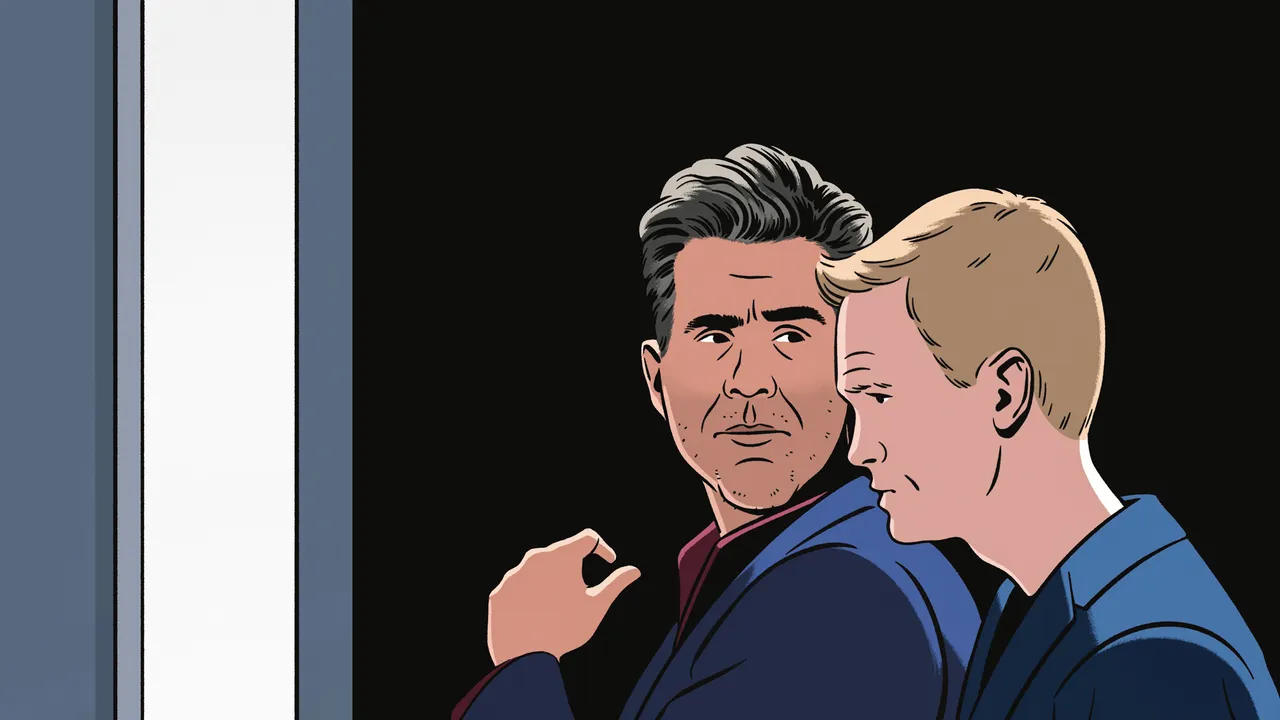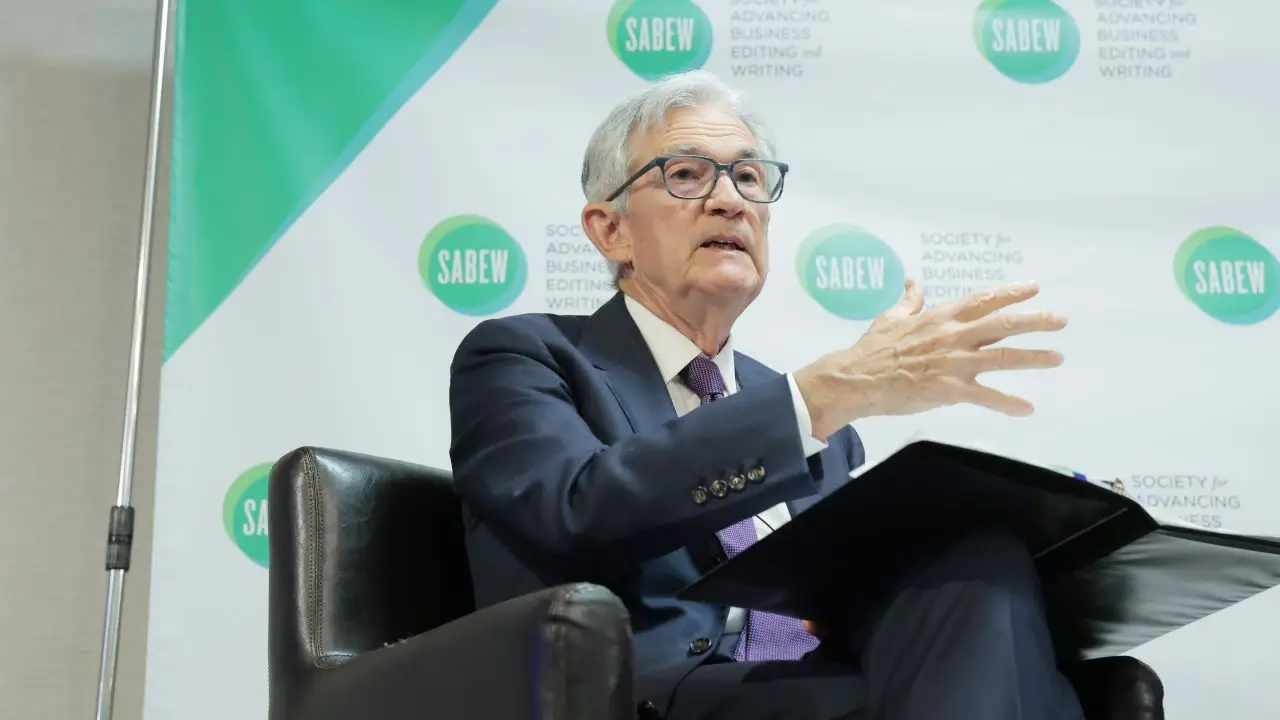
Is there anything left of the old concept of debate? The practice of good-faith argument feels harder and harder to find, even as bad-faith confrontation thrives. The whole process of civic debate now seems locked in a rage-baiting pantomime, its outcomes measured not in productive thinking but in “engagement metrics” registered by separate, furious publics.
The revival of Yasmina Reza’s “Art,” from 1994—directed at the Music Box by Scott Ellis in a production starring James Corden, Neil Patrick Harris, and Bobby Cannavale—offers a hint about how the discourse got so out of hand. Not much happens in “Art”: three bourgeois friends disagree on a matter of taste, and, instead of talking normally about it over a drink, they make increasingly savage personal attacks whenever they meet. Reza, a Parisian playwright and novelist, won a Tony for “Art” in 1998 and another for her even sluggier slugfest, “God of Carnage,” in 2009. In these influential insult comedies, translated from the French by Christopher Hampton, Reza satirizes the vapidity and pettiness of the upper-middle class; the more her characters rail at one another, the more they seem like puppets in a contemporary Punch-and-Judy show.
“Art” was a mile marker in the last quarter-century’s march toward bad-faith argument as popular entertainment, which is another way of saying—I can’t laugh at it now. The setup, at least, is tidily comic. Serge (Harris), a shallow dermatologist with deep pockets, pays three hundred thousand dollars for a white-on-white minimalist painting. It’s by an artist, he says proudly, collected by the Centre Pompidou, but when he shows the canvas off to his longtime friend, the aeronautical engineer Marc (Cannavale), Marc says it’s “shit.” The two then badger their go-along-to-get-along friend Yvan (Corden) for his opinion, maybe because they’re tired of hearing him complain about his upcoming marriage. Yvan, who has recently landed in the stationery business, arrives onstage while delivering a bravura monologue about wedding-invitation drama, by far the funniest moment in this production. It also momentarily unites his bickering friends: “Why do you let yourself be fucked over by all these women?” Marc asks, as Serge nods. At least Serge and Marc will always have misogyny.
The “art” (Reza’s title was originally meant to appear in quotation marks) exists as a thin pretext for the trio’s quarrels, and so the play operates at its own level of light abstraction. We’re not actually meant to believe that people behave this way. Serge hauls his purportedly costly canvas on- and offstage, clearly not worried that he might clip a doorframe. (It’s a prop, and Harris treats it like a prop.) Reza’s stage directions call for a setting that’s as “stripped down and neutral as possible,” which the set designer, David Rockwell, has interpreted as a bland, gray Sartrean antechamber. (Hell is finding out what your friends say about you.) The painting becomes a metaphorical screen against which the play can project its critique of taste as a signifier of identity, virtue, and power. Marc, for instance, has always believed that he is the alpha dog of the trio, but that status is threatened when he can’t bully the others into submission. “You should never leave your friends unchaperoned,” he says. They might form their own opinions.
According to a profile by Judith Thurman in this magazine, Reza finished “Art” in six weeks because she writes “improvising as I go along, not thinking too much.” That’s sometimes apparent. The play grows repetitive, and we have time to conclude that, if it were a real situation, someone would surely leave such a tiresome battle royale. To keep the melee going, Reza must continually throw her characters at one another, like a cockfighter pushing her birds back into the ring. Harris and Cannavale are flatter and less confident here than I’ve ever seen them. Only Corden, whose last stage performance in New York was in the hyperkinetic Richard Bean commedia dell’arte adaptation “One Man, Two Guvnors,” has the clowning chops to pull off what, in its bones, is a farce. At one point, Yvan decides that he ought to leave, but he’s not quite sure whether he will, and Corden puts him into a hilariously indecisive spin, as if Yvan is stuck in an invisible revolving door.
In 1994, Reza was making hay from the idea that there is no inherent, pre-social self that truly “likes” an object. She was writing in an intellectual atmosphere deeply influenced by the literary critic René Girard, who proposed the theory of mimetic desire. “Man is the creature who does not know what to desire, and he turns to others in order to make up his mind,” Girard observed. Yet she could just as easily have been composing “Art” today, staring down at her white page under the harsh glare of the internet panopticon. Online, you hear constant echoes of Marc’s suspicion that opinion is just another currency to garner status. To like or not to like? Perhaps you can tell that I didn’t much like “Art,” but I was intrigued, at least, by the feeling that Reza and her spiky play couldn’t care less.
Dial the clock back another hundred years or so and you find the ne plus ultra in using the theatre as a boxing ring: Henrik Ibsen, the father of both theatrical realism and the play of ideas, who crashed opposing paradigms together in his dramas to see which would win. In “A Doll’s House,” he set a woman’s duty to her family against the needs of her unconstrained spirit; in “An Enemy of the People,” he pitched a doctor’s duty to public health against a community’s economic comfort. In those two well-known plays, Ibsen favored the individuals over society, and so we think of him as the creator of truthful, uncompromising heroes, puncturing the hypocrisy of nineteenth-century Norway.
But Ibsen never settled on a single thesis. In “The Wild Duck,” from 1884, he made the truthful, uncompromising character into the monster of the piece. That monster is Gregers Werle (Alexander Hurt), who returns to his home town only to find that his childhood friend Hjalmar Ekdal (a superbly comic Nick Westrate) has been living in a fool’s paradise. Hjalmar’s wife, Gina (Melanie Field), has long hidden a past entanglement with Werle’s wealthy father, Håkon (Robert Stanton), the revelation of which would tear their marriage apart. Their adoring fourteen-year-old daughter, Hedvig (Maaike Laanstra-Corn), believes her layabout father to be a great inventor, but this, too, is a comforting lie. Ibsen here paints one of his most beautiful (and strange) portraits of a delusional but deeply loving household. Inside a room in their apartment, Hjalmar, his father (David Patrick Kelly), and Hedvig have built a shabby, shadowy simulacrum of the northern woods for a wild duck with a damaged wing. This hidden Eden satisfies them all—at least until the zealot Gregers, intent on exposing Hjalmar’s illusions, slithers in.
The production, directed by Simon Godwin from a version by David Eldridge, takes a while to find itself, perhaps because Ibsen dumps exposition into an unbearably clunky first scene or because the play doesn’t introduce its heart, Hedvig, for nearly half an hour. The child, of course, will be the one who pays the price for Gregers’s truth-telling, as he destroys the foundation of her parents’ relationship. The astonishing Laanstra-Corn does not play Hedvig purely as an innocent; there’s something as dangerous and emotionally labile in her shocked face as there is in Gregers’s explosive outbursts. Yet only the audience seems to be able to see how the adults’ toxicity is building up inside her mind and how—since she will not hate her father—she is coming to hate herself.
Theatres don’t perform “The Wild Duck” as much as, say, “A Doll’s House,” maybe because it’s terribly, terribly sad. To me, though, it’s the most honest of Ibsen’s plays. Here, the great theatrical advocate of wisdom-through-argument admits that argument itself has treacherous ramifications. Debate’s cut and thrust can be easily misunderstood by the young, Ibsen says—especially by those who turn its violence on themselves. ♦



